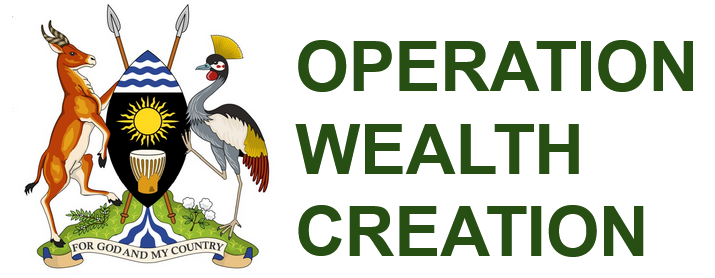ARTICLES
FOOD SECURITY CROPS
The food security intervention, NAADS procures and OWC distributes improved planting materials to farmers in the District Local Governments for the major food staple crops for the respective regions of the country, particularly those of quick maturing nature, notably maize and beans. These interventions are aimed at increasing the production and productivity of the various priority crop commodities for improved household food security.
To improve household food security, NAADS and OWC supports the production of maize, beans, cassava, banana and Irish potato as well as cowpeas, sorghum and groundnuts through the distribution of seeds and seedlings to farmers.
...BEANS PRODUCTION
Beans are widely grown for consumption in Uganda, with little use of costly inputs and on a subsistence level. Beans are a cheaper source of protein, making it highly important in the dietary regimes of the poor. As a legume, it also contributes to improving and sustaining soil fertility through atmospheric nitrogen fixation.
Since 2014, over 8 million kgs of bean seed have been provided to smallholder farmers in all district local governments that prioritise beans. Like maize, whereas beans are predominantly a staple food crop, they are also an important cash crop contributing to household incomes & national export earnings.

Common bean, scientifically known as Phaseolus vulgaris L. is an important legume staple crop in Uganda. National annual consumption of beans is estimated at about 58 kg per capita. In 2016, the area planted under beans was 683,120 Ha with a total production of 1,104,770MT.Volume of beans exported increased from 157,152 MT (2015) to 200,000MT (2017). Beans production system is predominantly small-scale accounting between 60–90% (on less than 2 acres) with average production of 0.25 tons (250kg) per acre despite potential yield of 700 to1500kg/ acre depending on the variety. The system is characterized by low input use especially seed and pesticides with most of the producers using seed from previous harvest.
- Beans are important source of protein and micronutrients mostly B vitamins, iron, calcium and zinc.
- The crop offers a good source of balance nutrition for rural households especially the poor who can barely afford animal protein.
- Beans can be consumed as immature pods, mature fresh grain or dry beans and its leaves are used to complement carbohydrate diets.
- In addition, dry beans are important source of income especially for women and youth.
- Besides, beans is able to fix nitrogen into the soil through its root nodules. This enhances soil fertility and further reduces the amount of nitrogen fertilizer used in bean cultivation and other crops majorly intercropped with beans.
- When intercropped, it plays many other functions including reducing pests and disease prevalence, weed control as well as controlling soil erosion.
- It is therefore an important food and nutrition security crop that can be used to enhance the economy of Uganda as well as a means of practicing sustainable climate smart agriculture.
Ecological requirements
- Beans thrives best in a warm climate of optimum growing temperature range of 20 to 280C with a minimum of 150C and a maximum of 320
- Temperatures above 320C and below 150C will cause poor pod set resulting in yield loss.
- Bean production is more successful in areas where rainfall is moderate to light during the latter part of growing season.
- Beans are adapted to a wide range of soils as long as the soils are reasonably fertile, well drained and free of conditions such as saline.
- An optimum soil pH of 5.8 to 6.5 is ideal for beans production.
Challenges and opportunities
- The bean sector experiences a number of problems at different nodes of the value chain namely; input, production, trading, processing and consumption levels.
- Major challenges include poor agronomic practices, declining soil infertility, lack of seed from improved cultivars, poor selection of bean seeds (seed mixtures), moisture stress, weed competition, pests and diseases, high post-harvest losses; unstable prices; limited post-harvest handling technologies, and lack of storage capacity.
- On the other hand, a number of opportunities exist in the beans industry including; increasing demand of beans at domestic, regional, and international levels; established research institution/ infrastructure to promote bean production in Uganda; availability of a wide range improved bean varieties that are suitable to the different agro-ecologies, and the possibility of value addition.
